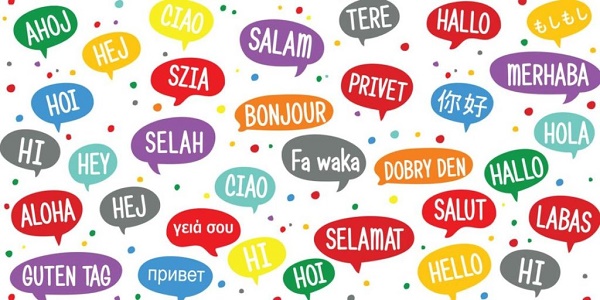Hello!
Since the beginning of time, learning languages has been a high-ranking scholarly pursuit. It enabled scholars to examine materials and sources in other languages. It opened up a whole new world for research and interpretation. It enhanced one’s overall worldview.
 This is why there are so many books on different methods of learning a language. These language-learning techniques might be more important than ever in today’s hyperconnected world.
This is why there are so many books on different methods of learning a language. These language-learning techniques might be more important than ever in today’s hyperconnected world.
Although it was important to know a language, there has never been so much practical application. You can now download materials in your target language and access the section of the internet to get in touch easily with native speakers. Modern technology made all of this possible.
The possibilities are endless. This technology can be used to aid in learning a new language. Language-learning apps, translation apps, and online courses have made it possible to learn a new language much faster. With all these factors in mind here are some predictions about the future of language learning.
Improved Understanding of Learning and Learning Difficulties
 Truth is, there has never been more data than today. A capable AI-backed algorithm can access countless examples from language learners of all proficiency levels. Any analysis drawn from this data is more pertinent and consequential.
Truth is, there has never been more data than today. A capable AI-backed algorithm can access countless examples from language learners of all proficiency levels. Any analysis drawn from this data is more pertinent and consequential.
There were a few methods that have been known for facilitating the learning of language. This can be greatly improved with the right technology.
It was difficult, for example, to speak to native speakers or to use the target language in situations where it was necessary. This is no longer the case with the widespread usage of the internet.
 The second key to success in learning a language is having intrinsic motivation and goals. It was never easier to move, open an overseas company, or find a long-distance friend. Motivation is another important aspect.
The second key to success in learning a language is having intrinsic motivation and goals. It was never easier to move, open an overseas company, or find a long-distance friend. Motivation is another important aspect.
It was also difficult to be exposed to different formats of language. You may have had your grammar book but it didn’t replicate a real-life situation.
Even if you recorded a few phrases spoken, they were clinically correct. There were no grammatical errors or odd pronunciations.
Although this sounds like a great thing, it didn’t prepare you for a real-world scenario. You can now diversify your learning experiences with the help of different materials, even YouTube videos in the target language.
Machine Learning and NLP
 For a long time, efforts have been made to teach an algorithm human language. Over the years, it has been obvious that AI is able to grasp complex concepts such as context, in some cases even complex figures of speech, much more easily than humans. semantics technology is what made all of this possible. It helps the program understand the meaning and not just its etymology.
For a long time, efforts have been made to teach an algorithm human language. Over the years, it has been obvious that AI is able to grasp complex concepts such as context, in some cases even complex figures of speech, much more easily than humans. semantics technology is what made all of this possible. It helps the program understand the meaning and not just its etymology.
Voice recognition was another major breakthrough. The algorithm recognizes sounds much more accurately now and can distinguish words based upon the context, geographical location, etc.
Natural Language Processing (NLP) is a crucial component of machine learning when it comes to language learning. A natural language, by itself, is data. It is, however, very different from traditional data.
In a digital world, even the written word can come in many formats. Different menus can be arranged on different websites, and social media posts may have different words than emails. This adds to the complexity and importance of the context.
Language Learning Apps
 Next, you should understand the importance of language learning applications. These apps are great because they provide language learners with lessons or learning sessions on-demand. It’s almost like having a tutor with you wherever you are.
Next, you should understand the importance of language learning applications. These apps are great because they provide language learners with lessons or learning sessions on-demand. It’s almost like having a tutor with you wherever you are.
Traditional learning had one of its greatest problems. There was a presumption you wouldn’t have a dictionary with you in real-life situations where the target language was required. This is no longer true. It is possible to retake an app-based course or access your in-app vocabulary right away.
This is a totally different approach to the problem. Professional translators rely heavily on translation apps. So why should ordinary language users be held to different standards?
These apps have amazing results. The app’s results are astounding. For example, people who spent six hours studying the app increased their knowledge by at least one level (almost 69%).
 75% of those who had studied for at least 15 hours also showed improvement. You can spread your sessions however you like or take it all in one shot if your phone has the battery.
75% of those who had studied for at least 15 hours also showed improvement. You can spread your sessions however you like or take it all in one shot if your phone has the battery.
A private tutor would cost quite a lot to hire for 15-minute classes. However, these apps are either completely free or require a minimal monthly subscription.
Duolingo, the largest name in the market, went public on NASDAQ in 2021 to further illustrate the industry’s popularity.
Enhancing Multilingual Sentence (EMU), Embedding
This is one of the most important postulates in semantics. Sometimes you have to decide whether to retain the meaning (semantics) or keep it as is. This can be especially problematic when translating idioms.
 EMU is a great tool in this area. The semantic classifier, one of the EMU components, can identify ground truth labels and assign context based on these. It can then predict what language will be used in each context.
EMU is a great tool in this area. The semantic classifier, one of the EMU components, can identify ground truth labels and assign context based on these. It can then predict what language will be used in each context.
EMU also includes a multilingual encoder, which is the only way that this method can work in multiple languages, and a language discriminator. The language discriminator simply distinguishes between the two languages.
The platform was in its early stages. Efforts were made to “confuse” the discriminator. This strategy has resulted in a platform that is much more resistant to such tactics.
EMU’s multilingualism is now at its peak when it comes to translating and interpreting sentences, as well as distinguishing between sentences with different parallels.
Also read:
- The Best Latex Mattress to Buy in 2025
- What is right for you – Illness Cover or Income Protection?
- 12 Best Tips to Improve Your Appointment Booking System
In Conclusion
 The ultimate breakthrough could come down to machines being able to understand human speech in a manner similar to humans.
The ultimate breakthrough could come down to machines being able to understand human speech in a manner similar to humans.
This platform would be able to offer instant information on the semantics of any word or phrase, sentence, and text. It would immediately solve miscommunication and translate problems.
The fact that we live in a hyperconnected world makes it even more attractive to learn languages. While English is the language of the internet, there are large portions of the digital world that can be found in other languages. These (currently obscured) parts could be unlocked if users learn new languages.
Thank you!
Join us on social networks!
See you!






